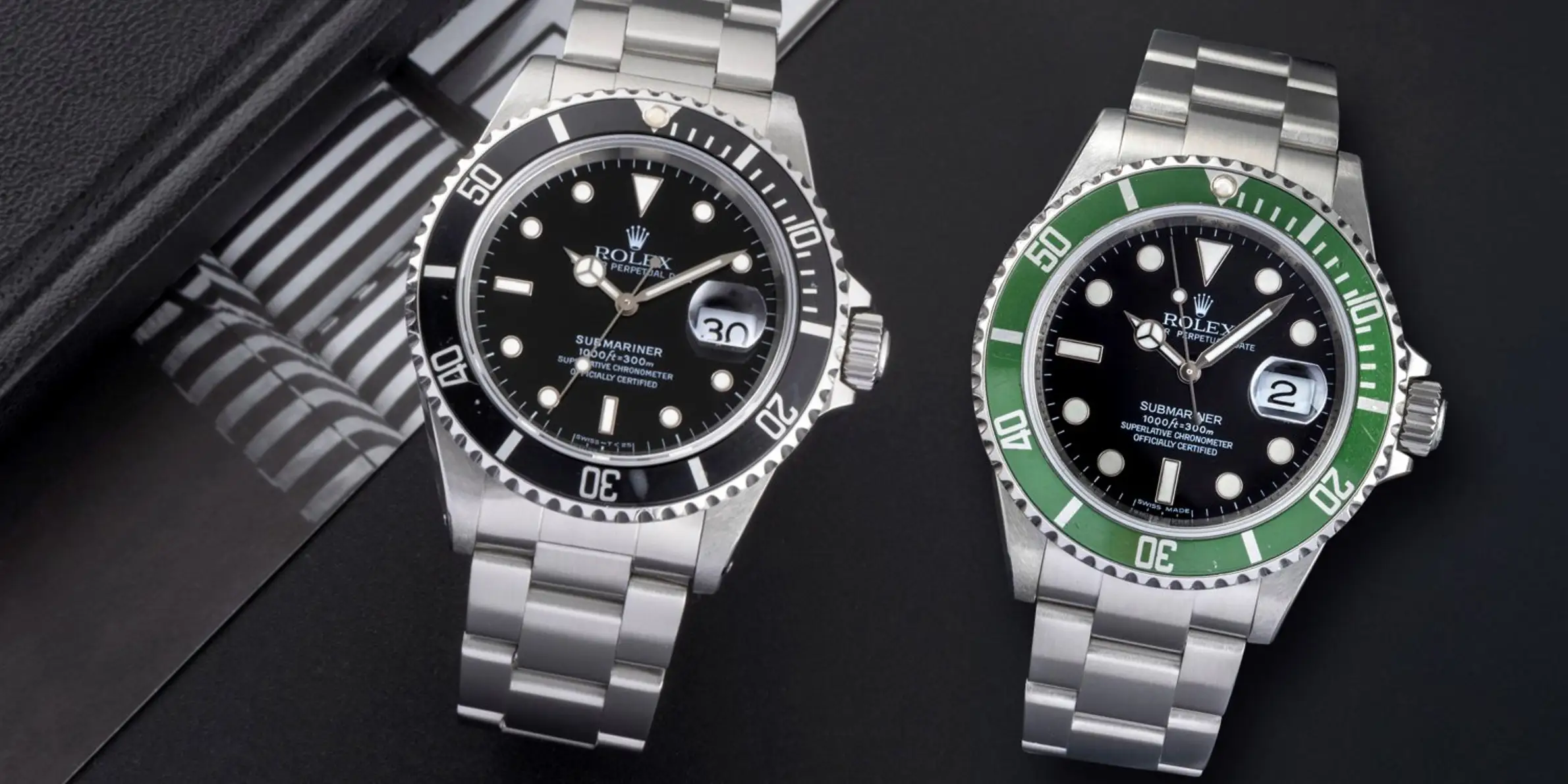From instrument diver to cultural icon
You can see it on the wrist of a diver, under the sleeve of a tuxedo or on the front page of an enthusiasts’ forum. The Rolex Submariner, born in the early 1950s and quickly propelled into the spotlight by James Bond, has transcended its status as a tool to become an icon. It is not the first diving watch in history, but it imposed an aesthetic, a visual language and an imagination. Its strength lies in this singular equation between relentless functionality and universal elegance. This is precisely why it is the most copied in the world: because its design touches on the very prototype of the diver, which we seek to appropriate, reproduce, divert or dream of, depending on the times and budgets.
The archetype of a diving design
The Submariner has established itself by setting codes so clear that any deviation is instantly noticed. Its extreme readability, its balance and its reassuring proportions have established a reputation. From the first references, the waterproof Oyster case, the graduated rotating bezel and the contrasting black dial constitute a grammar that the entire industry still speaks.
- A unidirectional bezel with a dark insert and functional typography.
- A matte or black lacquered dial, punctuated with high-contrast round and rectangular indexes.
- So-called “Mercedes” hands, immediately recognizable.
- A case with full sides, clean lugs and an assertive crown protector.
- A sturdy, brushed, three-link Oyster bracelet, ready for the sea or the city.
Over the decades, Rolex has honed this archetype without betraying it: reinforced crown, extension slide for suit, luminova then Chromalight, ceramic bezel insert, Oystersteel steel with superior metallurgical qualities. Everything changes, nothing moves — the magic of evolution by touches, which reinforces the icon without uprooting it.
Why it is the most copied
- A design perfect for use: form serves function and readability. Copying the Submariner means copying a proven solution.
- A universal face: from the PMU to the red carpet, the Sub always seems in its place. The industry imitates this stylistic chameleon.
- A cultural aura: from Sean Connery to street culture, the Submariner image carries a story. Reproducing the silhouette is capturing a bit of this myth.
- Instant recognition: we see it, we know. Entry-level brands take inspiration from this to reassure; counterfeiters to deceive.
- Organized scarcity and desirability: waiting lists, bustling secondary market. The gap between desire and access fuels homages and counterfeits.
From Steinhart to Invicta on the tribute side, through a myriad of micro-brands, the market is full of “Sub-like”. Some explore the color palette, others reinterpret the proportions. But everywhere, we recognize the matrix: a refined dial, a clear bezel, three hands which tell the time without emphasis.
Homage or counterfeiting: the ethical boundary
We must distinguish the wink from the crime. The homage uses codes without usurping the logo or pretending to be something other than what it is. It can have its cultural or mechanical interest, and sometimes a real quality. Counterfeiting steals a name, deceives the customer and undermines creation. If the Submariner is the most copied, it is also because its name has become a social symbol – a magnet for pretense.
- Homage: assumed inspiration, clearly identified brand, price to match.
- Counterfeiting: usurped logo and mentions, desire to deceive, random quality.
Watchmaking culture benefits from celebrating honest inspiration and combating falsehood. The icon is all the better for it: it remains a living reference, not a caricature.
What Rolex has that copies don’t
We can reproduce a silhouette; we do not copy a standard. Behind the Submariner, there are industrial specifications, a global service network, mastery of materials and quality control that set the pace. The tolerances, the assembly, the sensation of the bezel with its precise click, the chronometric stability certified by Superlative Chronometer, the Chromalight which breathes perfectly in the night, all this draws a threshold that imitation struggles to cross.
- Continuous micro-evolutions: ergonomics, secure clasps, diving extension designed for use.
- Proprietary materials and careful metallurgy (Oystersteel, scratch-resistant bezel ceramic).
- A historical coherence, from the Sub “big crown” to contemporary references, which tells a lineage.
- A service and residual value that the market recognizes, beyond fashion.
It’s this addition of engineering and storytelling that makes the Submariner an icon, not just a pretty diver. The object speaks to the wrist, but it also speaks to the imagination.
The silhouette that goes beyond its own myth
The Submariner no longer belongs only to Rolex; it inhabits our visual culture. It can be adapted infinitely, parodyed, hyper-specialized, colored, “vintage-ized” or fonted: it remains immediately readable. This explains its posterity as much as its proliferation. Copying the Submariner means trying to get your hands on an entire alphabet of watch design. But a language only lives by those who speak it with talent. This is where Rolex, patiently, continues to write — one line after another — the grammar of an icon.
